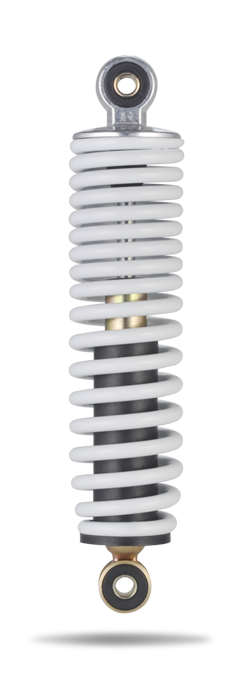Hard fork mountain bikes are not common anymore. Now mountain bikes are basically suspension forks.
RockShox, Manitou, Marzocchi, and FOX are the four most famous manufacturers of bicycle suspension forks. RockShox and Manitou have different grades of products, while the prices of Marzocchi and FOX products are high, and ordinary riders cannot afford them. Taiwanese brands Suntour, RST, and TGS are often used for entry-level mountain bikes.
The role of mountain bike suspension forks:
Shock absorber: force applied during riding → the front fork is compressed → reach the extreme point → rebound to the original length (the speed of rebound is affected by the damping), repeating continuously to reduce the force on the rider's body and reduce the bumps. A hundred yuan civilian car can only achieve the goal of comfort; some competitions must absorb shocks because they are too strong without shock absorbers, they are easy to get injured, rollover, and the speed can’t get up. The mountain races seen in the Olympics are called XC, and generally only Front shock absorbers, and some add rear shock absorbers, but that is not for shock absorption. Most XC cars add rear shock absorbers for the grip of the rear wheels to keep the rear wheels on the ground. Can't understand)
Classification of suspension forks of mountain bikes:
The shock absorber front fork is divided into:
(1) Spring fork: The fork with the lowest gear has no damping. Features: Cheap.
(2) Resistance glue: use resistance glue as the medium, without damping. Features: Compared with the above, there are more than the below, but the resistance glue will age after three years and needs to be replaced.
(3) Oil spring fork: use spring as rebound medium and oil as damping. Features: the heaviest, but the strongest, the spring is relatively smooth to use, and is sensitive to small shocks. Generally, the suspension oil is changed every six months.
(4) Oil and gas fork: air is used as the rebound medium and oil is used as damping. Features: lighter than oil spring forks, but less robust (only relative, no problem for ordinary off-road), and pumped once every six months. The advantage of using air as the medium is that it is lighter in weight and can protect the wrist of the rider in high-speed off-roading, but it is not very sensitive to small vibrations.

Selection and purchase of suspension forks of mountain bikes! How to choose the most suitable mountain bike fork
The first rule for selecting or upgrading shock absorber front forks is to choose the corresponding front fork according to the riding style and riding habits. Generally, shock absorber front forks can be classified as "for off-road XC" depending on the riding terrain and stroke length. : Suspension stroke is about 80-100mm; "All terrain": Suspension stroke is about 120-140mm, and "free riding FR and downhill DH": Suspension stroke is about 160-180mm, even 203mm, such as RockShox Boxxer , Fox 40RC2.
Another important point is the smoothness of the front fork. A good suspension fork must have a suitable combination of springs and dampers, but must also move smoothly. When buying a front fork, you can actually press it to see if the fork has never been stressed, compressed, compressed to the end, and then rebounded to uncompressed, whether there is a feeling of stuck or unsmooth.
It is important to remind riders that the correct preload stroke adjustment is very important. The so-called preload setting is to respond to the ability of the front fork to stretch downwards when encountering a large recessed hole. Taking RockShox as an example, its Sag is generally set to 25% of its maximum stroke; FOX is set to 20% of its maximum formation; Magura is set to 20-30%. Furthermore, how much air pressure should the air pressure fork be hit? , It depends on the weight of the rider. Generally, there is a table of weight and air pressure on the front fork surface or in the user manual for reference.
In addition, many riders use only 80% of the available suspension stroke, resulting in either the fork being significantly softer and prone to bottoming, or it is too hard and poorly sensitive. To get a good tuning, RockShox recommends that a properly tuned suspension fork should use about 10-20% of its entire suspension stroke after the rider gets in the car; in case of a severe collision, it will Use up all the shock absorber stroke, but there will be no bottoming out. The ideal compromise between such soft suspension sensitivity and sufficient impact resistance requires excellent fingertip sensitivity during adjustment.

 English
English 简体中文
简体中文 Việt nam
Việt nam भारत
भारत ไทย
ไทย